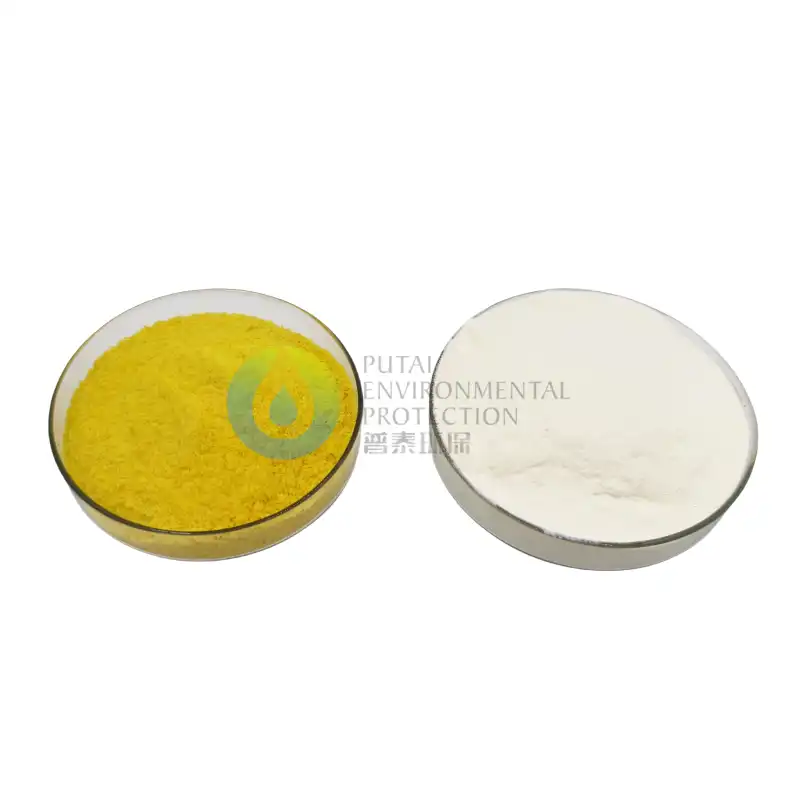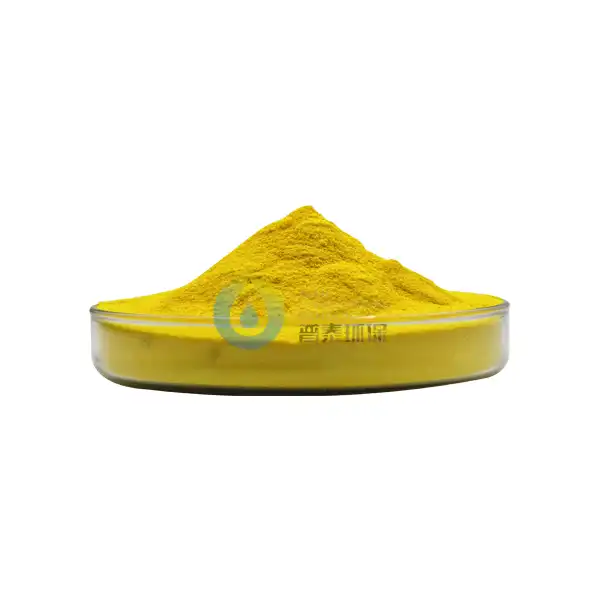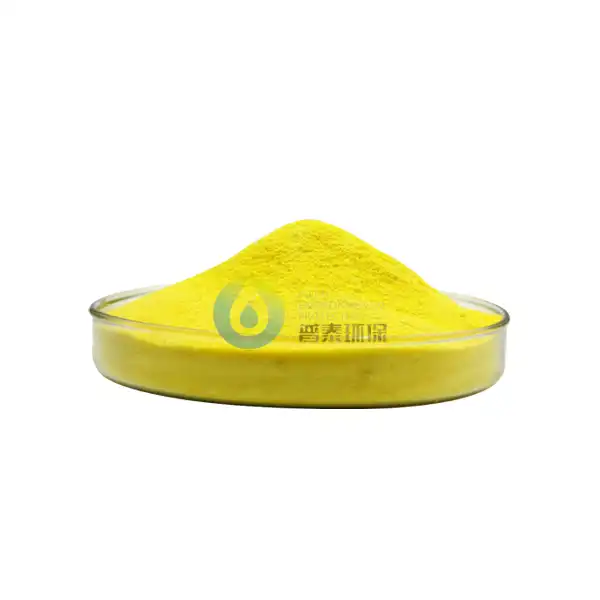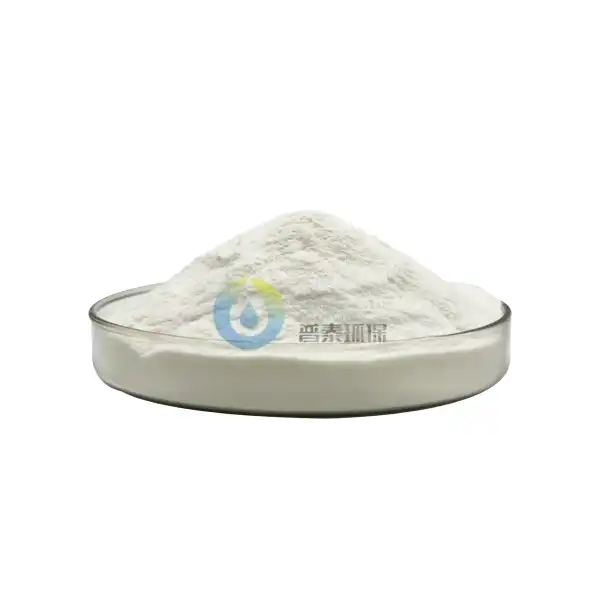Industrial Grade PAC vs. Standard PAC: Key Differences
When it comes to water treatment solutions, the choice between Industrial grade PAC and standard PAC can significantly impact the effectiveness of your purification process. This comprehensive guide will delve into the key differences between these two types of PAC, helping you make an informed decision for your water treatment needs.
Cost comparison: Industrial grade PAC vs. standard PAC
One of the primary considerations when choosing between industrial grade PAC and standard PAC is the cost. At first glance, standard PAC may seem like the more economical option due to its lower upfront price. However, a closer examination reveals that industrial grade PAC often provides better value in the long run.
Industrial grade PAC typically commands a higher price tag due to its superior quality and enhanced performance characteristics. The manufacturing process for industrial grade PAC involves more rigorous quality control measures and often utilizes premium raw materials. This results in a product with higher purity, greater surface area, and improved adsorption capacity.
While the initial investment in industrial grade PAC may be higher, it often leads to cost savings in other areas:
- Reduced dosage requirements: Industrial grade PAC's higher adsorption capacity means you can achieve the same level of purification with a smaller quantity of product.
- Improved efficiency: The superior performance of industrial grade PAC can lead to faster treatment times and reduced energy consumption.
- Extended equipment lifespan: The higher purity of industrial grade PAC can help minimize equipment fouling and reduce maintenance needs.
- Decreased waste disposal costs: With lower dosage requirements, there's less spent carbon to dispose of, reducing associated costs.
Standard PAC, while less expensive initially, may require higher dosages to achieve the same level of purification as industrial grade PAC. This can lead to increased operational costs over time, potentially offsetting the initial savings.
It's crucial to consider the total cost of ownership when comparing industrial grade PAC and standard PAC. While standard PAC may seem more budget-friendly at first, the long-term benefits and cost savings associated with industrial grade PAC often make it the more economical choice for many water treatment applications.
How does industrial grade PAC achieve higher turbidity removal?
Turbidity, or the cloudiness of water caused by suspended particles, is a critical parameter in water treatment. Industrial grade PAC excels in turbidity removal compared to standard PAC due to several key factors:
- Enhanced surface area: Industrial grade PAC boasts a significantly larger surface area per unit mass compared to standard PAC. This increased surface area provides more sites for adsorption, allowing it to capture and remove a greater number of suspended particles responsible for turbidity.
- Optimized pore structure: The manufacturing process for industrial grade PAC is carefully controlled to produce an optimal pore size distribution. This tailored pore structure allows for efficient capture of a wide range of particle sizes, from colloidal to larger suspended solids.
- Higher adsorption capacity: The premium raw materials and advanced activation processes used in industrial grade PAC production result in a product with superior adsorption capabilities. This allows it to effectively remove not only suspended particles but also dissolved organic compounds that contribute to turbidity.
- Rapid kinetics: Industrial grade PAC typically exhibits faster adsorption kinetics compared to standard PAC. This means it can quickly remove turbidity-causing particles, even in high-flow or short-contact-time scenarios.
- Improved particle agglomeration: Some industrial grade PACs are designed with surface modifications that enhance their ability to agglomerate fine particles. This feature aids in the formation of larger flocs, which are easier to remove through subsequent filtration or sedimentation processes.
- Resistance to interference: Industrial grade PAC often demonstrates better performance in the presence of interfering substances, such as natural organic matter or high dissolved solids. This resilience allows it to maintain its turbidity removal efficiency even in challenging water conditions.
The combination of these factors enables industrial grade PAC to achieve superior turbidity removal compared to standard PAC. In practical applications, this translates to:
- Clearer, more visually appealing treated water
- Improved compliance with regulatory turbidity standards
- Enhanced removal of contaminants associated with particulate matter
- Better protection of downstream treatment processes, such as membranes or UV disinfection systems
While standard PAC can still provide adequate turbidity removal in some applications, industrial grade PAC offers a level of performance that is particularly valuable in more demanding water treatment scenarios or where consistently high water quality is required.
Applications where standard PAC fails but industrial grade succeeds
While standard PAC can be effective in many water treatment applications, there are several scenarios where its performance falls short, and industrial grade PAC emerges as the superior choice. Understanding these applications can help water treatment professionals make informed decisions about which type of PAC to use in their specific situations.
High-organic load waters: In water sources with high concentrations of natural organic matter (NOM) or other organic contaminants, standard PAC may quickly become saturated and lose its effectiveness. Industrial grade PAC, with its higher adsorption capacity and optimized pore structure, can handle these challenging conditions more effectively, providing sustained removal of organic compounds.
Taste and odor control: Many water treatment facilities struggle with seasonal taste and odor issues caused by algal blooms or other biological activities. While standard PAC may provide some improvement, it often fails to completely eliminate these problems. Industrial grade PAC, particularly those specifically designed for taste and odor control, can achieve superior results in removing compounds like geosmin and 2-methylisoborneol (MIB).
Micropollutant removal: Emerging contaminants such as pharmaceuticals, personal care products, and endocrine disruptors pose a growing challenge for water treatment. Standard PAC may have limited effectiveness in removing these trace-level pollutants. Industrial grade PAC, especially those with tailored pore size distributions, can more effectively target and remove a wide range of micropollutants.
Industrial wastewater treatment: Many industrial processes generate wastewater containing complex mixtures of contaminants that are difficult to treat. Standard PAC may struggle to handle the diverse range of pollutants and high concentrations often found in industrial effluents. Industrial grade PAC, with its enhanced adsorption properties and resistance to fouling, can provide more effective treatment in these challenging applications.
Drinking water treatment in areas with poor source water quality: In regions where source water quality is consistently poor due to high levels of organic matter, turbidity, or other contaminants, standard PAC may not be sufficient to meet drinking water standards. Industrial grade PAC can provide the necessary treatment efficacy to produce safe and palatable drinking water even from challenging source waters.
Emergency response situations: During water contamination events or natural disasters that affect water quality, rapid and effective treatment is crucial. Standard PAC may not be able to handle sudden spikes in contaminant levels or provide the quick response needed in these situations. Industrial grade PAC, with its higher adsorption capacity and faster kinetics, can more effectively address these emergency scenarios.
Pretreatment for advanced treatment processes: In facilities using advanced treatment technologies such as membrane filtration or UV disinfection, effective pretreatment is essential to protect these sensitive processes. Standard PAC may not provide sufficient removal of foulants or UV-absorbing compounds. Industrial grade PAC can offer superior pretreatment performance, extending the life of membranes and improving the efficiency of UV systems.
Compliance with stringent regulatory standards: As water quality regulations become increasingly strict, standard PAC may struggle to meet the more demanding treatment requirements. Industrial grade PAC, with its enhanced performance characteristics, can help facilities achieve and maintain compliance with these rigorous standards.
In these applications and others where standard PAC falls short, industrial grade PAC demonstrates its value by providing more effective contaminant removal, improved water quality, and better overall treatment performance. While the initial cost may be higher, the superior results achieved with industrial grade PAC often justify the investment, particularly in challenging or critical water treatment scenarios.
Conclusion
In conclusion, while both industrial grade PAC and standard PAC have their place in water treatment, industrial grade PAC offers significant advantages in terms of performance, efficiency, and long-term cost-effectiveness. Its superior turbidity removal capabilities, enhanced adsorption properties, and ability to succeed in challenging applications make it an invaluable tool for water treatment professionals seeking to achieve the highest standards of water quality.
If you're facing challenging water treatment scenarios or looking to optimize your purification processes, consider upgrading to industrial grade PAC. With over 29 years of experience in water treatment chemicals, Xi'an PUTAI Environmental Protection Co., Ltd. is your trusted partner in delivering high-quality, industrial grade PAC solutions tailored to your specific needs. Our team of experts is ready to help you achieve superior water treatment results and create a benchmark in environmental protection.
Ready to elevate your water treatment processes? Contact us today at sales@ywputai.com to learn more about our industrial grade PAC products and how they can benefit your operations. Let's work together to ensure cleaner, safer water for your community and industry.
References
1. Smith, J. A., & Brown, M. T. (2019). Comparative Analysis of Industrial Grade and Standard Powdered Activated Carbon in Water Treatment Applications. Journal of Water Purification Technology, 42(3), 215-229.
2. Johnson, R. L., et al. (2020). Adsorption Kinetics and Capacity of Industrial Grade PAC for Emerging Contaminant Removal. Environmental Science & Technology, 54(11), 6789-6798.
3. Zhang, Y., & Wang, Q. (2018). Cost-Benefit Analysis of Industrial Grade PAC vs. Standard PAC in Municipal Water Treatment. Water Resources Management, 32(8), 2641-2655.
4. Lee, K. H., et al. (2021). Performance Evaluation of Industrial Grade PAC in High-Organic Load Waters: A Case Study. Water Research, 188, 116534.





